Friday, November 11, 2022
This is part 2 of my series on email marketing automation (here’s part 1) — check out these tips to make your current automations more effective and/or to create new automations that will up the profitability of your email program!
Note: I presented some of this content at the GURU Conference in November 2022, but due to time constraints I could not present all of it. So, if you saw me there, this post and its predecessor will give you the full story! Enjoy!
There’s no one ‘right’ cadence for an automated email marketing campaign, as illustrated below.
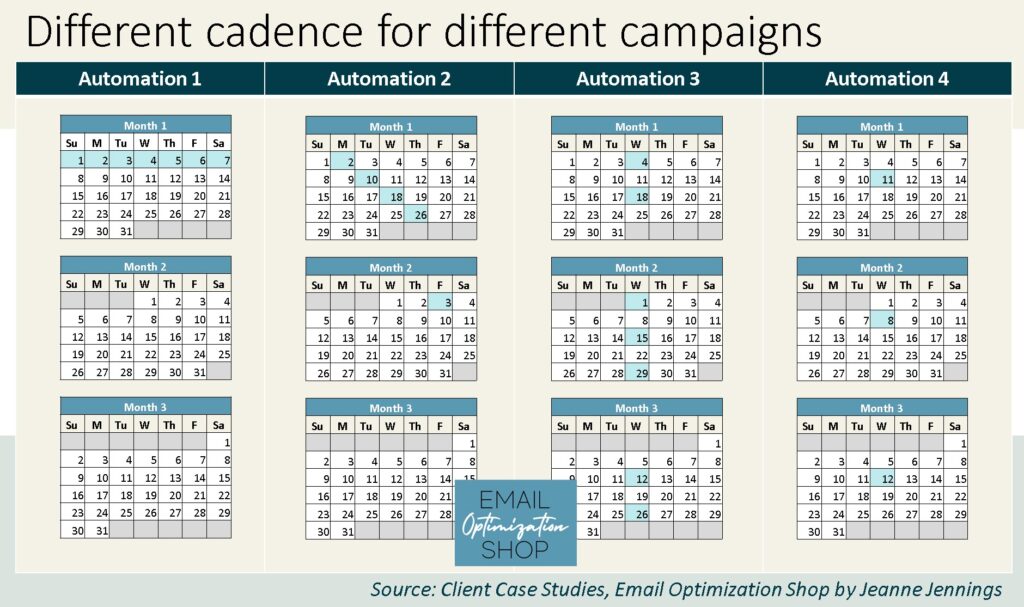
The seven-days-in-a-row cadence (Automation 1) was used for a new subscriber welcome series for a highly technical product (B2C) that we wanted people to get the most out of right away.
Automation 2 was a webinar series for a B2B client. We wanted to go roughly weekly but not always on the same day.
The fortnightly series (every-other-week, Automation 3) was a mid-funnel nurture series for a B2B client where we felt like weekly was too often but monthly would not have been enough.
And Automation 4, the once-a-month cadence, was for a B2C ‘your monthly bill is available’ email.
Each was a good fit for its campaign. But if you try to swap the cadences, they won’t work as well. And for the case study we’ve been using…
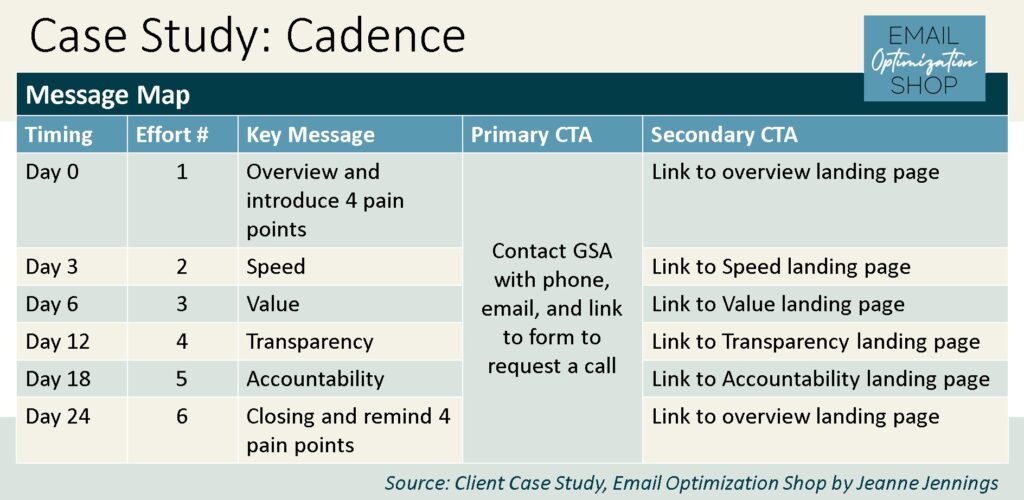
Looking at the content and the timeframe (if we were going to help them, we needed to get started within about a month) we decided on a 24-day cycle. We had less time between emails at the start, and more time between messages toward the end.
We figured those who were interested would be sold within the first three emails; the rest of the series was geared to those who might try to go it alone and then get frustrated and reach out for help.
It’s nice to have a message map like we do above. But you can really take your automations to the next level of relevance with logic. Some logic is pretty simple:
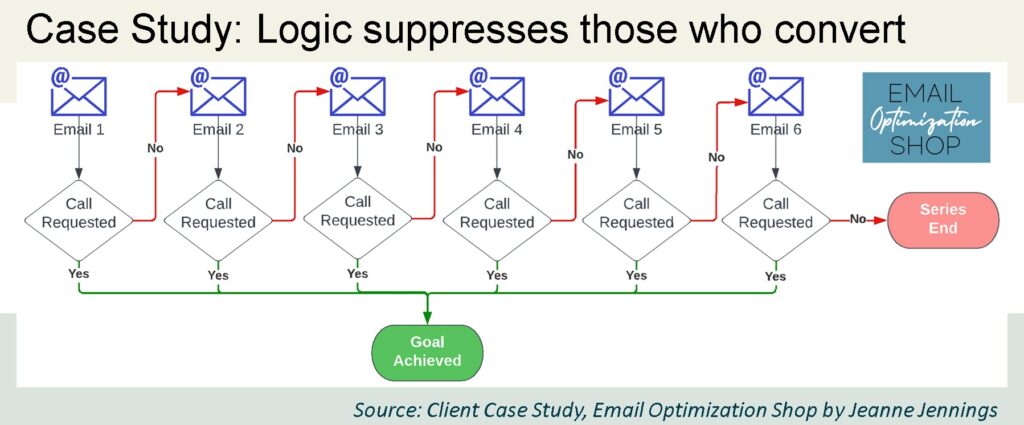
Here we’re using the series from the message map, but now we’re viewing it in a flow chart format with logic added to suppress those who request a call with a representative from future sends. This makes sense, as once they reach out to speak with a representative our goal has been achieved and there’s no need for them to receive the rest of the series.
It’s fine to think big and design a large-scale automation program (here’s one that I did for a client) …
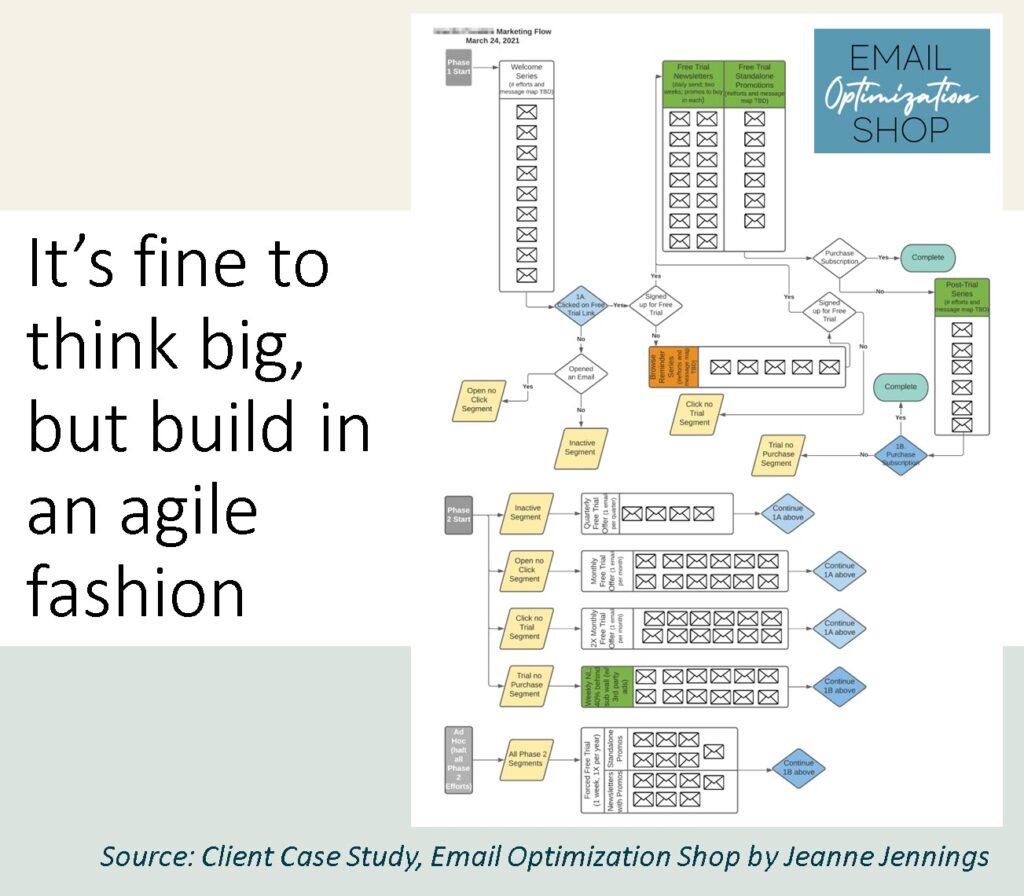
But you should still break it down into manageable bites to implement it. Otherwise you’ll be building a very long time, investing a lot of time, money, and resources, with no return.
If you can break it down into logical bits and prioritize those that are most likely to generate revenue (or whatever your business goal is), you can build a bit, launch that bit, and generate revenue as you move on to build the next bit.
For instance, you saw the first iteration of our case study automation campaign above. A second iteration might be this…

…where we send people who click on a link but don’t request a call into a general info email series that we create.
Or we might make this the second iteration…
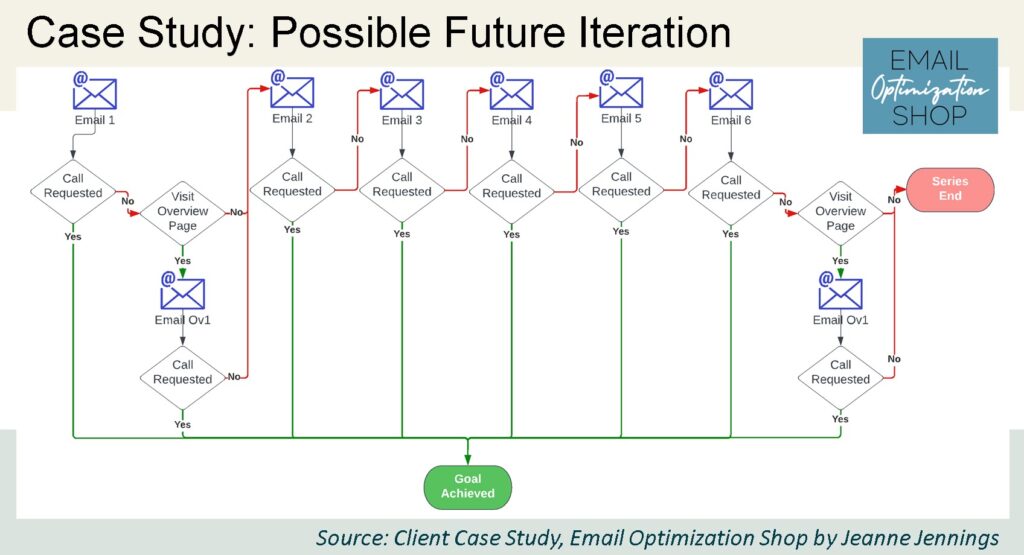
…where people who don’t request a call but do view an overview landing page then receive another email on that key message, with another CTA to request a call, before they continue on with the series.
This type of follow-on email with more detail on the landing page they viewed could be added to each email in the series.
There are a multitude of ways to go with something like this. The way t move forward is to look at the results you’re getting, build a hypothesis, and test it. It’s often more effective to double-down on what works than it is to try to fix something that doesn’t.
In this instance, the overview email, which was #1, was driving a lot of call requests. So we decided to double down on it by sending those who were intrigued enough to click through but didn’t request a call an email touching on the same key message, in hopes that this would motivate them to request a call. We added it to email #6 as well, since these had similar messages and it wasn’t that much more work (we used the same new email for both).
Of course you’re going to want to see how each email in the series performed – my go-tos here are click-through rate (CTR) and conversion-rate-from-sent (CR):
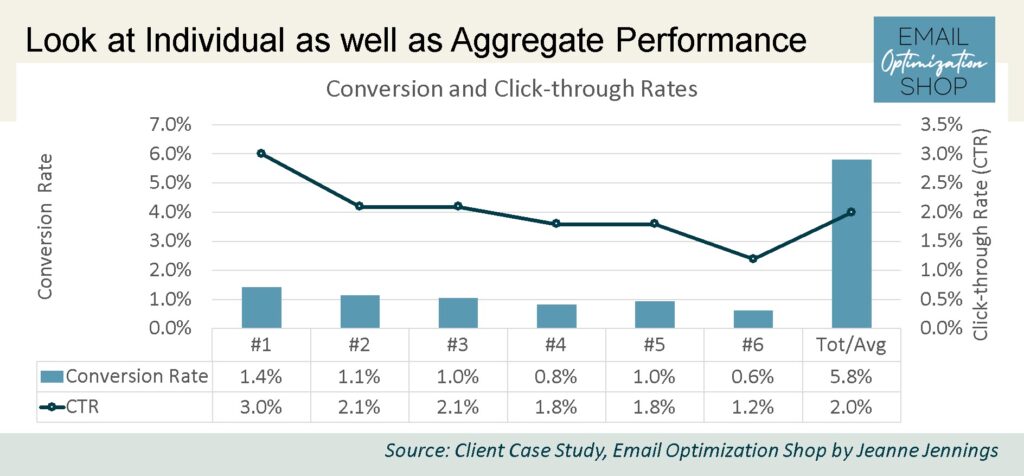
But we also want to do reach analyses, so we can see how the series did as a whole:
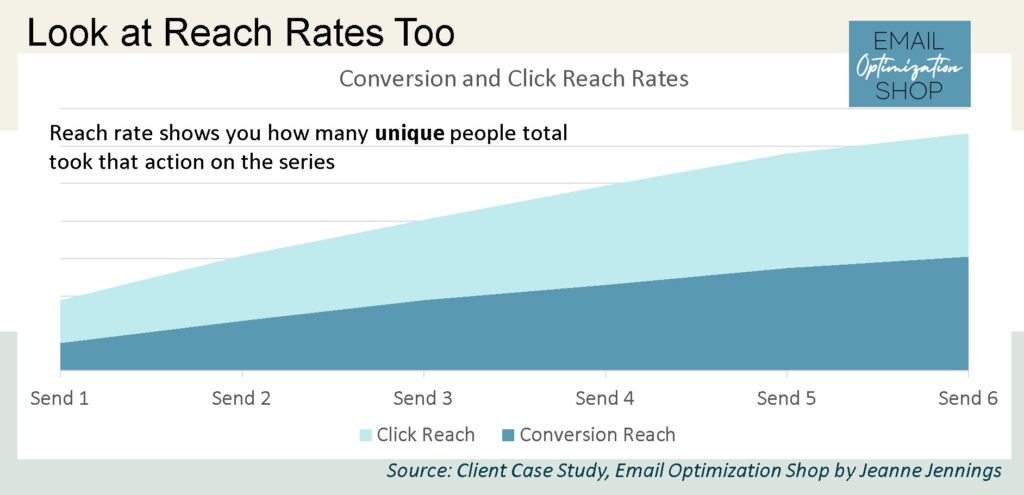
Reach analysis basically shows us where the same people were clicking/converting on each email, or whether we were engaging different people in our audience with each send. It shows the net new (not repeat) people who clicked or converted on each send.
Here’s an example to help explain how we calculate this (it looks just at click reach, but conversion reach is determined in the same fashion):
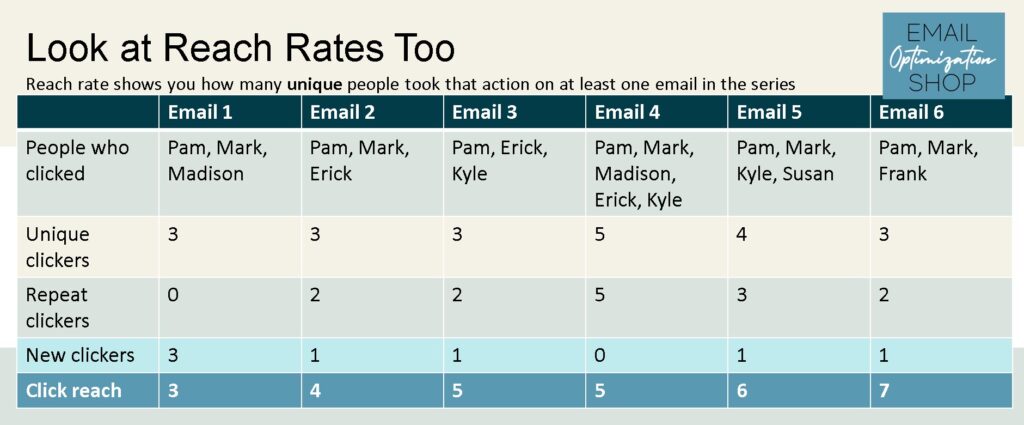
Click reach tells us what percentage of the list clicked on at least one email in the series; click-through rate (CTR) tells us how many unique people clicked on each email in the series.
Some people find complicated more fun…

…but in my experience, simple is often more effective. Especially when you are starting out with automation.
At the beginning of the first article in this series I said that while automated email campaigns provide passive income, they aren’t really ‘set-it-and-forget-it;’ here’s why. Once you launch an automated campaign, you’re going to want to look at how it’s performing and test things to optimize it. Scientific method is your best bet to do this:

Scientific method is fun – it’s my go-to method for helping my clients improve the bottom-line performance of their email marketing campaigns. It’s especially effective for automated campaigns which will be used on an ongoing basis for the foreseeable future, because any lift you get you’ll get on an ongoing basis.
And as you test more elements of an automated campaign and optimize them, your learning and lifts get compounded. If you can get a 10% lift in revenue-generated-per-email (RPE) for each of 9 tests, you’ve doubled the revenue you’re generating from that campaign. And if you can get larger increases (which I achieve on a regular basis), you get there even faster and see your RPE triple or more.
Whew! That was a lot, right? But don’t be overwhelmed! You can take it slow, doing one tip at a time until you’re at the point where you can optimize.
Let me know how it goes– and don’t hesitate to email me if it seems too daunting to handle on your own. I’d love to learn more about your automated programs and put together a proposal to work with you on boosting your bottom-line performance.
Be safe, stay well,
